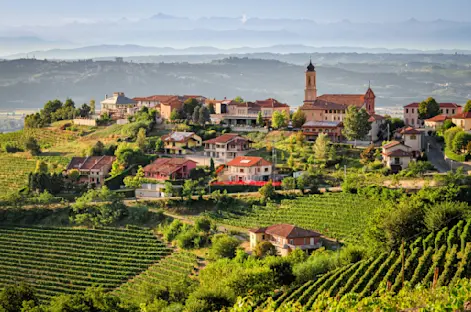
Greenland is losing about 200 billion tons of ice per year—a rate that has doubled from the 1900s to the 2000s. ©From the video “Glaciers Lost in Time” by Nature Video
When Anders Bjørk of the Natural History Museum of Denmark discovered tens of thousands of aerial photographs of Greenland from the 1930s lying in a 17th-century fortress outside of Copenhagen, he knew he had found more than just additional materials for the museum’s collections. He realized he had stumbled upon a vital, missing piece for his fellow “ice historians.”
With Arctic temperatures now rising faster than anywhere else on Earth, Greenland is losing about 200 billion tons of ice per year. That melting could swell sea levels by almost a foot by the end of this century. If all of Greenland’s ice melted—a possibility over the next few centuries—sea level would rise by 23 feet, enough to flood U.S. coastal megacities, such as Miami and New York.

The 1930s photos were captured with a rotating camera flown in an open hydroplane, the tail of which you can see here, in the upper center. ©From the video “Glaciers Lost in Time” by Nature Video
Such projections, however, carry large uncertainties, in part due to a lack of basic information about Greenland’s past. Satellite data go back only 40 years, which is why Bjørk’s discovery is so important: it provides a snapshot of the state of the glaciers from 80 years ago, when the Earth experienced a warm period that shares some similarities with the present.
In the 1930s, Denmark and Norway were engaged in a territorial dispute over East Greenland. Both countries conducted a lot of aerial mapping, using a rotating camera flown in an open hydroplane at 13,000 feet. That has turned out to be extremely fortuitous for today’s climate scientists. By comparing these images alongside more recent aerial images and satellite observations, researchers were able to produce an eight-decade record of how 132 glaciers in southeast Greenland have waxed and waned. They found that the glaciers retreated strongly during both warm periods, but many have lost more ice during our current record temperatures.

Within a span of 80 years, there has been a dramatic change in the extent of Greenland’s ice. ©From the video “Glaciers Lost in Time” by Nature Video
Watch the video below, titled Glaciers Lost in Time, produced by Nature Video. Not only can you see the retreat of a glacier through the years, but a surface lowering of more than 1,300 feet. That’s a lot of geologic mass that’s been swallowed by the ocean, contributing to global sea level rise.
Looking at the historical images makes me wonder if the photos taken today will be used sometime in the not-too-distant future to show where the world’s coastlines used to be.
Here’s to finding your true places and natural habitats,
Candy



































What could have been done when it should have been done was not, because of a lack of understanding, and oft times, indifference. Harry Truman warned of excesses when he was the president. We’ve known, and it is just too late to avoid the greater consequences. Sadly, our fellow creatures suffer first.